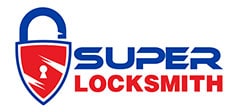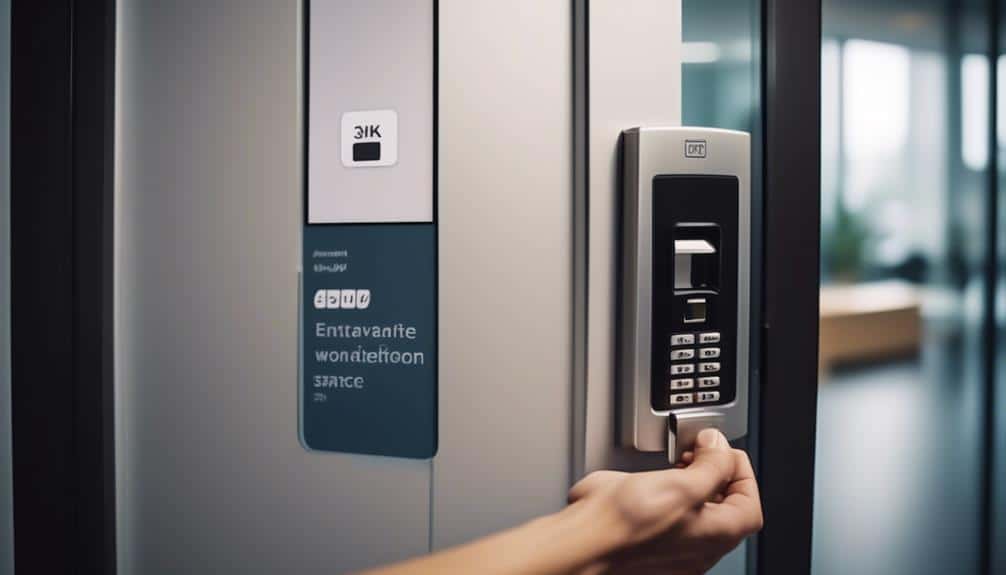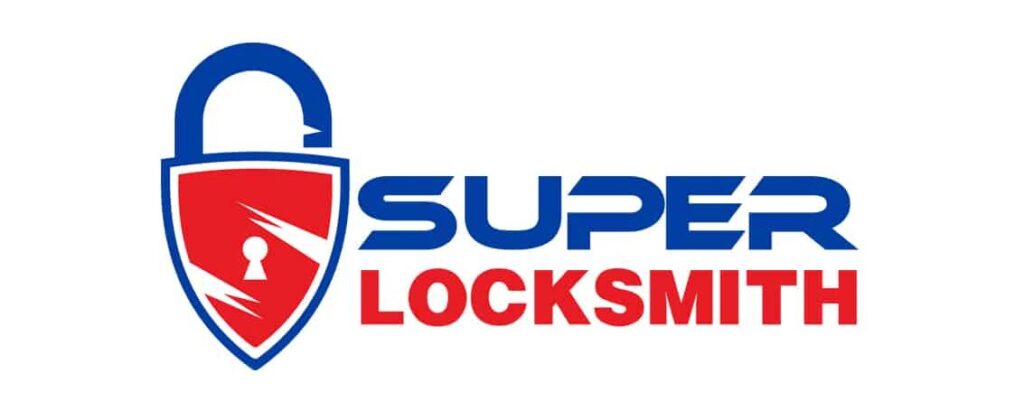As we stepped into the sleek, modern office building, we couldn't help but notice the seamless entry process. With a simple swipe of a key card, the heavy glass doors smoothly slid open, granting us access to a world of benefits.
But why are key card systems becoming the go-to solution for security and access control?
Well, let's just say that the advantages go far beyond convenience.
Increased Security Measures
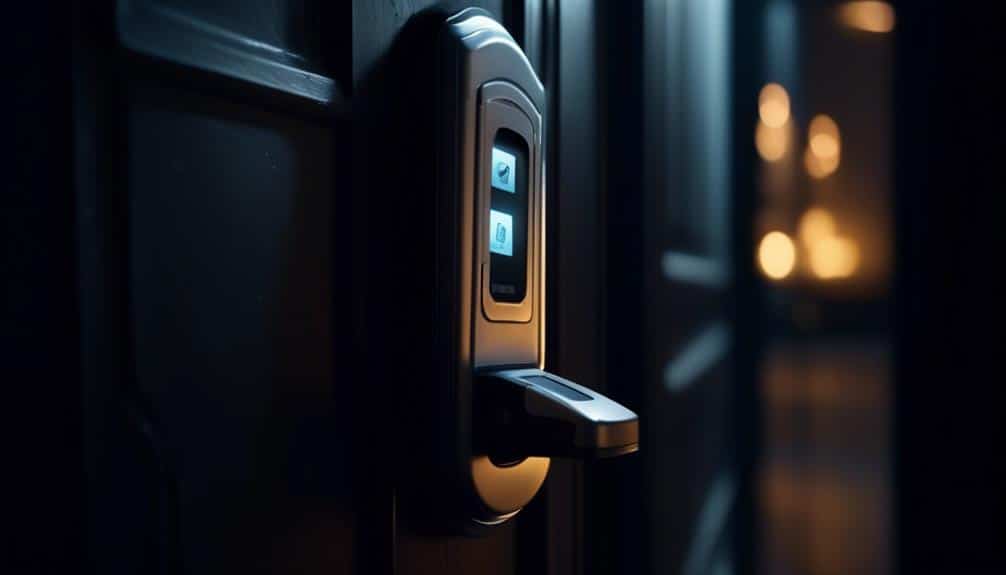
Using key card systems can significantly enhance security measures in various settings. These systems provide enhanced authentication and reduced vulnerability, making them an effective tool for safeguarding sensitive areas.
One of the main advantages of key card systems is their ability to provide enhanced authentication. Traditional lock and key systems can be easily compromised, as keys can be lost, copied, or stolen. However, key cards use advanced technology, such as encryption and unique identifiers, to ensure that only authorized individuals can gain access. This significantly reduces the risk of unauthorized entry and enhances overall security.
Additionally, key card systems also reduce vulnerability by eliminating the need for physical keys. With traditional lock and key systems, if a key is lost or stolen, the entire lock system may need to be replaced, which can be time-consuming and costly. Key card systems, on the other hand, offer the convenience of easily deactivating lost or stolen cards, without the need for replacing the entire system. This not only saves time and money but also minimizes the risk of unauthorized access.
Enhanced Access Control
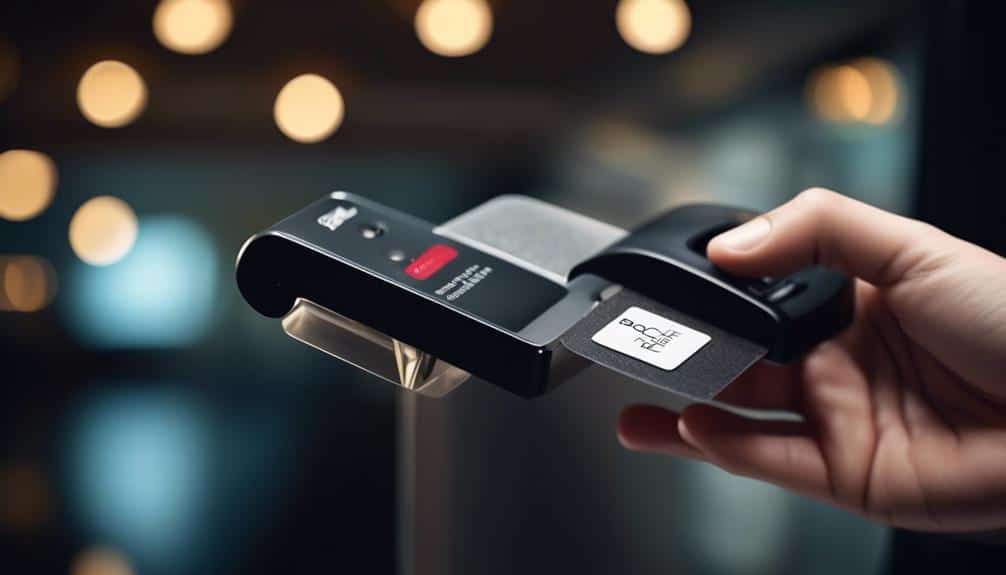
Key card systems not only enhance security measures, but they also provide organizations with enhanced access control capabilities. These systems offer improved employee accountability and streamlined visitor management, allowing businesses to maintain better control over who has access to their premises.
One of the key advantages of key card systems is the ability to easily track employee movement within the organization. By assigning unique key cards to each employee, organizations can monitor and record their access activity. This creates a clear audit trail, enhancing employee accountability and deterring unauthorized access. In the event of a security breach or incident, the access control system can provide valuable information to identify the individuals involved.
Furthermore, key card systems enable organizations to streamline visitor management processes. Instead of relying on traditional sign-in sheets or manual registration, visitors can be issued temporary key cards with restricted access privileges. This not only enhances security by ensuring that visitors can only access approved areas but also simplifies the check-in process, saving time for both visitors and staff.
The following table illustrates the benefits of enhanced access control provided by key card systems:
| Benefits of Enhanced Access Control |
|---|
| Improved employee accountability |
| Streamlined visitor management |
Convenient and Efficient Entry
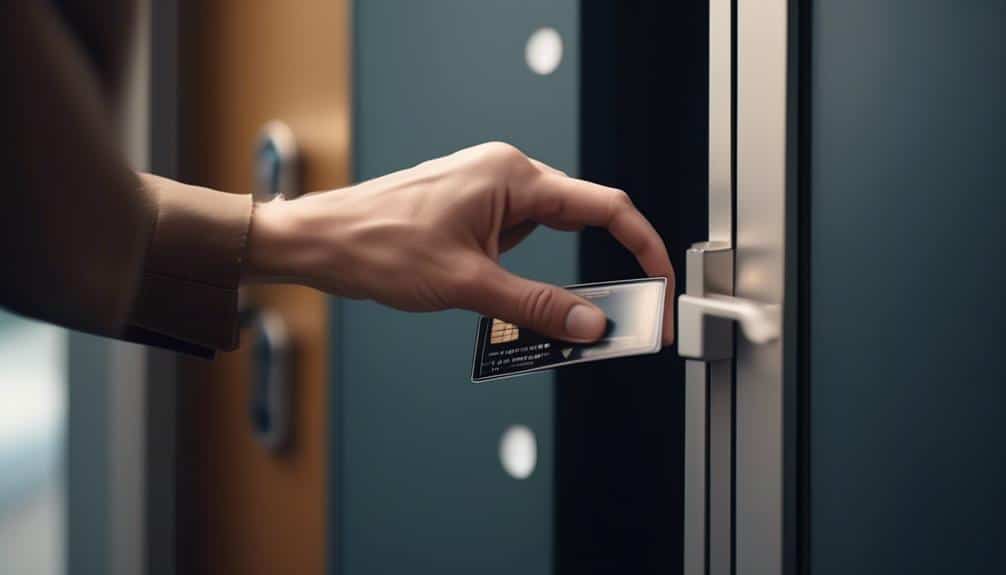
With the convenience and efficiency offered by key card systems, entry into secure areas becomes seamless and effortless. Key card systems provide time-saving access and streamline the entry process, making it more convenient for users. Unlike traditional lock-and-key systems, key card systems eliminate the need for physical keys, reducing the chances of lost or stolen keys. This not only saves time but also enhances security by eliminating the risk of unauthorized access due to lost or stolen keys.
Key card systems enable users to quickly gain access to secure areas with a simple swipe or tap of their card. This eliminates the hassle of fumbling for keys or waiting for someone to open the door. With key cards, entry can be granted instantly, allowing for smooth and uninterrupted flow of people in and out of secure areas.
Moreover, key card systems can be integrated with other security measures, such as surveillance cameras or alarm systems, further enhancing the efficiency of entry. For example, when a key card is swiped or tapped, it can trigger the opening of a door while simultaneously activating the surveillance system to monitor the entry. This integration ensures that only authorized individuals gain access to secure areas, providing an additional layer of security.
Cost-effective Solution

As we explore the cost-effective benefits of key card systems, it's evident that their efficient entry process and integration with other security measures make them a practical choice for businesses and organizations.
One of the major advantages of key card systems is their ability to reduce expenses. Traditional lock and key systems can be costly to maintain, with the need to constantly replace lost or stolen keys and rekey locks. Key cards, on the other hand, can be easily deactivated and reprogrammed if lost or stolen, eliminating the need for expensive replacements.
Additionally, key cards can be programmed to restrict access to certain areas, reducing the risk of theft or unauthorized entry. This not only increases security but also helps to minimize potential losses for businesses.
Another aspect that makes key card systems a budget-friendly option is their integration with other security measures. They can be easily integrated with surveillance cameras, alarm systems, and access control software, creating a comprehensive security solution without the need for additional costly investments.
Detailed Tracking and Reporting
A key benefit of key card systems is the ability to provide detailed tracking and reporting. This feature offers improved accountability and accurate data analysis, enabling organizations to make informed decisions and optimize their operations.
Here are two reasons why detailed tracking and reporting are valuable:
- Real-time monitoring: Key card systems allow for real-time monitoring of access and activities within a facility. Every time a key card is used, the system records the date, time, and location of the access attempt. By analyzing this data, organizations can identify patterns, detect anomalies, and address any potential security issues promptly. Real-time monitoring enhances security and helps prevent unauthorized access.
- Activity reports: Key card systems generate comprehensive activity reports that provide insights into employee behavior, facility usage, and overall security. These reports can be customized to include specific data points such as entry and exit times, areas accessed, and duration of stay. By analyzing these reports, organizations can gain a better understanding of their operations, identify areas for improvement, and enforce policies effectively. Activity reports also serve as valuable documentation for compliance purposes.
Frequently Asked Questions
Can Key Card Systems Be Easily Integrated With Existing Security Infrastructure?
Integrating key card systems into existing security infrastructure may pose some challenges. However, the benefits of centralized control make it worth considering.
With key card systems, we can easily manage access levels, track entry and exit times, and revoke access remotely if needed. This integration enhances security measures and streamlines operations.
The convenience and efficiency of key card systems provide a secure and reliable solution for access control.
Are Key Card Systems Compatible With Mobile Devices for Seamless Access Control?
Mobile device compatibility is a significant advantage of key card systems for businesses. With the ability to integrate key cards with mobile devices, access control becomes seamless and convenient. This feature allows employees or authorized personnel to use their smartphones or tablets as virtual key cards, eliminating the need for physical cards.
The benefits of mobile device compatibility include enhanced security, cost savings, and improved efficiency. By using their mobile devices as key cards, employees can securely access designated areas without the risk of losing or misplacing physical cards. This eliminates the need for expensive card replacements and reduces the administrative burden of managing physical cards.
Furthermore, mobile device compatibility enables businesses to easily manage access control remotely. With the use of mobile apps or cloud-based platforms, businesses can grant or revoke access privileges in real-time, from anywhere, at any time. This provides flexibility and control over their security infrastructure, allowing them to respond quickly to changes in personnel or security requirements.
How Long Does It Typically Take to Install and Set up a Key Card System?
When it comes to installing and setting up a key card system, it's crucial to consider the installation time and key card system setup time.
The duration of this process can vary depending on several factors such as the size of the facility, the complexity of the system, and the expertise of the installation team.
We've found that on average, it typically takes a few days to complete the installation and setup process for a key card system.
Are Key Card Systems Susceptible to Hacking or Unauthorized Access?
Key card systems vulnerabilities can be a concern for security. However, there are ways to prevent hacking and unauthorized access.
Implementing strong encryption protocols and regularly updating the system's software are effective measures. Additionally, implementing multi-factor authentication and monitoring access logs can further enhance security.
Can Key Card Systems Be Customized to Restrict Access to Certain Areas or Times of Day?
Key card systems offer a range of customization options, allowing us to restrict access to certain areas or times of day. This level of control enhances security and reduces the risk of unauthorized entry. One interesting statistic is that organizations that implement key card systems experience a 50% decrease in security breaches.
